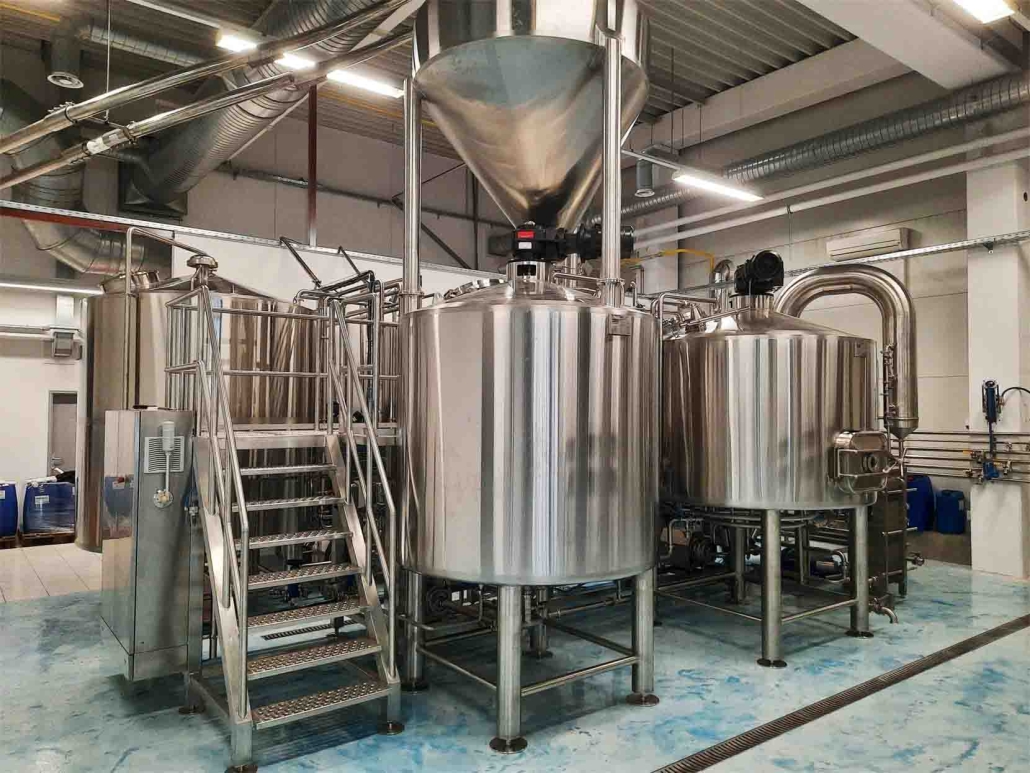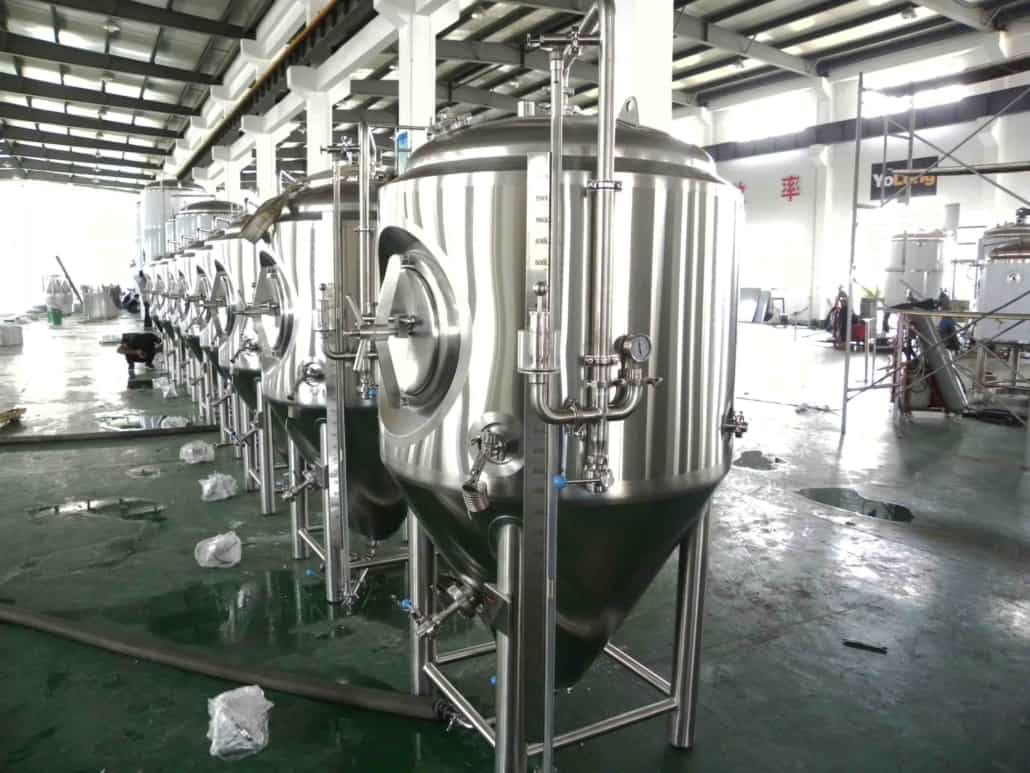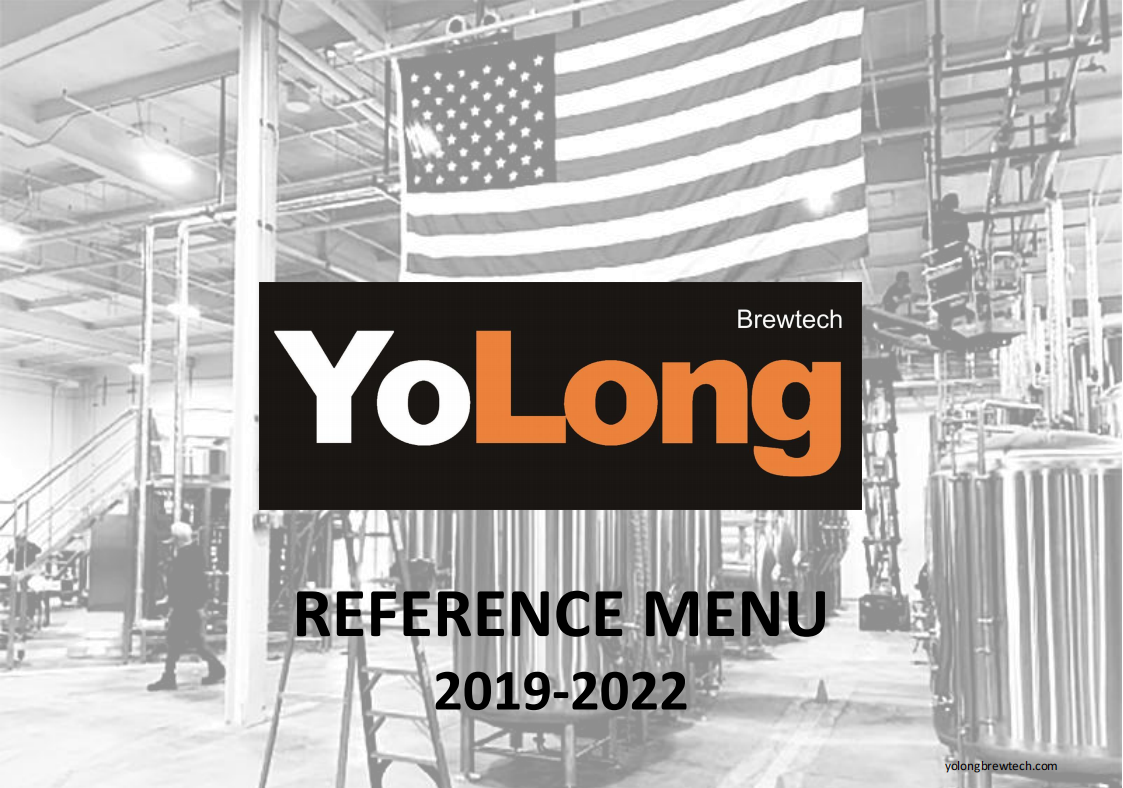3.5 Barrel Brewhouse Systems
Brewhouses are the core equipment enabling commercial beer production. This guide covers key considerations around 3.5 barrel brewhouse systems including configurations, sizing, layout, customization, installation, maintenance and more to inform brewery buyers, designers and technicians.
3.5 BBL Brewhouse Overview
A 3.5 barrel (BBL) brewhouse system enables small-scale commercial beer production, typically brewing 1-2 batches per day. Key components include:
Mash Tun – Mixes hot liquor with crushed grains to extract sugars and flavors
Kettle – Boils sweet liquid (wort) with hops to impart bitterness
Whirlpool – Settles out solids post-boil before fermentation
Control System – Automates movement of fluids, heating and monitoring
Properly integrating a 3.5 BBL system allows efficient brewing best leveraging the brewhouse capacity. This guide covers types, sizing, layout, customization, pricing, operation, maintenance and comparisons around 3.5 BBL configurations to inform brewery planning.

Types of 3.5 BBL Brewhouse Systems
Both manual and automated systems suit 3.5 BBL commercial needs:
| Type | Description |
|---|---|
| Manual | Requires transferring fluids by gravity flow or pumping. More labor. |
| Automated | Programmable controls move liquids between vessels. Less labor. |
Table 1: Manual vs automated options for 3.5 BBL brewhouse systems
While automated systems require higher investment, the reduction in manual labor and increased consistency can provide rapid payback in optimized brewing operations.
Sizing Considerations for 3.5 BBL Brewhouses
When developing a production brewhouse, properly sizing vessels enables:
- Mash Efficiency – Appropriate liquor-to-grain ratios during mashing
- Future Expansion – Adding fermenters and infrastructure without brewhouse bottlenecks
- Peak Flow Rates – Prevent overflow with vessels sized above peak flow volumes
- Brew Length Flexibility – Occasional larger or smaller batch capabilities
For a 3.5 BBL mash tun, recommended configurations include:
- 5-7 BBL kettles – Allow mashing in entire volume, boil vigor control
- 3-5 BBL whirlpools – Settle out solids post-boil before transferring clean wort to fermenters
This infrastructure supports mashing and boiling 3-4 BBL batches for fermentation flexibility.
Key Components of a 3.5 BBL Brewhouse System
Constructed from food-grade stainless steel, key elements of a 3.5 BBL brewhouse incorporate:
Mash Tun – Mixes grist and hot liquor to convert starches into fermentable sugars. Customizable for infusion or multi-step mashing.
Lauter Tun – Separates sweet wort from spent grains after mashing. Often integrated with mash tun.
Kettle – Boils wort bittering hops and coagulating proteins. Sized above mash tun volume.
Whirlpool – Swirls post-boil wort settling hops and proteins before transfer.
Piping – Food-grade piping routes fluids via pumps or gravity. Sloped for drainage.
Control Panel – Touchscreen orchestrates equipment, temperatures and fluid movement automatically.
These vessels and connections enable moving sweet wort through the complete mashing, lautering and wort production process essential for beer brewing.
Popular Brewhouse Configuration Layouts
Two typical equipment layouts used for 3.5 BBL brewhouse systems include:
Linear Layout – Mash tun feeds lauter tun feeding the kettle and finally whirlpool linearly. Requires more floorspace but simplifies gravity flow.
Compact Layout – Equipment stacked vertically with pumps routing fluid between vessels to minimize footprint. More complex.
Compact layouts save significant floorspace using vertical space. This enables installing into existing structures. Linear arrangements provide simpler gravity flow paths avoiding pumping. Brewers choose layouts balancing space constraints, expandability plans, fluid routing complexity and equipment cost.
Customization Options for 3.5 BBL Brewhouses
While offering turnkey solutions, many 3.5 BBL brewhouse manufacturers provide extensive customization around:
- Mash tun configuration – Infusion or multi-step mashing
- Advanced lautering – Programmable variable flow control valves
- Kettle features – Autohop additions or live steam injections
- Control system – Degree of recipe programmability and automation
- Grain handling – Conveyor, silo and milling systems
- Process monitoring – Gravity, pH and mass flow measurement sensors
- Heat exchange integration – Linking with existing boiler rooms or cooling
- Effluent management – Spent grains and wastewater routing infrastructure
- Fermentation interfaces – Smooth transfers, cooling and pitching
- Brewery management software – Inventory, production planning and analysis
This flexibility around equipment and functionality allows matching brewhouses precisely to brewing process objectives.
Comparing 3.5 BBL Brewhouse Manufacturers
Many brewing equipment manufacturers offer 3.5 BBL brewhouse solutions. When comparing providers, key criteria include:
- Customization Range – Assess flexibility around vessels, automation and auxiliary systems
- Brewing Innovation – Examine proprietary technologies improving efficiency, quality and reliability
- Manufacturing Quality – Require polished stainless steel welds and easy cleanability
- Industry Experience – Review brewhouse portfolio across small and large production scales
- Business Stability – Evaluate company longevity and financial health
- Services Offered – Installation, training, maintenance and support services availability
- Pricing – Compare proposals across desired options and service levels
Thoroughly vetting brewhouse manufacturers on total costs, production engineering, services and company viability provides confidence in major brewhouse investments for long-term success.
3.5 BBL Brewhouse System Pricing
Complete prices vary from $100,000 to $250,000+ depending on options:
Base Equipment – Mash tun, lauter tun, kettle, whirlpool and basic piping starts around $100,000
Control System – Touchscreen recipe management and process automation adds $15,000-$30,000
Auxiliaries – Grain handling, cooling, cleaning and fermentation equipment contributes $20,000+
Installation – Professional integration work typically runs $15,000-$25,000
Shipping – Freight and crating costs can reach $10,000 for full containers
Budgeting at least $150,000-$200,000 allows a fully operational automated 3.5 BBL starter brewhouse. Larger breweries spending up to $250,000 gain higher efficiency and consistency.
Operating and Maintaining 3.5 BBL Brewhouse Systems
To sustain performance, brewhouses require stringent brewing protocols and scheduled maintenance:
Brewing SOPs – Consistent mash profiles, transfer timings, cleaning and sanitation procedures optimize quality and yield.
Preventative Maintenance – Regularly inspect fittings, seals, sensors and motors. Replace worn parts proactively.
Tuning – Monitor all batches for precision improvement. Adjust profiles, temperatures and flow rates to perfect recipes.
CIP Automation – Programmed cleaning-in-place cycles save hours cleaning while eliminating operator errors.
Contingency Planning – Create redundancy plans for potential equipment failures, delays or brewer absence.
Making checklists and schedules for detailed brewing SOPs plus preventative maintenance enables smooth operations, top quality and maximum uptime.
| Task | Frequency | Description |
|---|---|---|
| CIP cleaning | After each brew | Clean and sanitize entire system |
| Check valves, seals | Monthly | Inspect for wear, leaks causing contamination |
| Inspect/replace gaskets | 6 months | Avoid any air leaks or external contamination |
| Calibrate sensors | Annually | Ensure accurate gravity, pH, flow measures |
| Full pasteurization | Annually | Full system sterilization baseline |
| Review budgets, plans | Ongoing | Update business projections with operational data |
Table 2: Recommended maintenance tasks and frequencies for 3.5 BBL brewhouse systems
Staying on top of cleaning, measurements, upgrades and business projections keeps 3.5 BBL startups humming profitably.
The Brewing Process on a 3.5 BBL Brewhouse System
While configurations vary, the typical brewing process on a 3.5 BBL brewhouse comprises:
Milling – Crack grains in rotational mill for access during mashing
Mashing – Mix grains with hot liquor at set temperatures to convert starches into fermentable sugars
Lautering – Drain sweet liquid then spray grains with hot sparge liquor to rinse sugars
Boiling – Mix wort with hops boiling over 60-90 minutes extracting flavors and bitterness
Whirlpooling – Swirl hot wort settling solids before transferring clear liquid
Cooling – Rapidly chill boiling wort avoiding contamination before pitching yeast
Fermenting – Transfer into fermenters where yeast converts sugars into alcohol
Filtration – Filter to clarify before kegging, canning or bottling finished beer
Packaging – Fill serving containers for shipping and sales
Automating temperature controls, pumps, valves and sensors allows a single brewer to orchestrate this entire process from grain to package beer.
Comparing Manual vs Automated 3.5 BBL Brewhouses
When selecting between brewhouse infrastructure levels, key tradeoffs exist:
| Consideration | Manual Brewhouse | Automated Brewhouse |
|---|---|---|
| Initial cost | Lower equipment expense | Higher infrastructure investment |
| Labor requirements | Multiple brewers needed | Single brewer can manage |
| Efficiency | 60-70% typical | 75-85%+ possible |
| Training time | Shorter to start brewing | Longer integrating automation |
| Maintenance | Simpler mechanical upkeep | Complex troubleshooting |
| Quality consistency | Varies batch to batch | Automated precision |
| Expansion flexibility | Limited | Scalable capacity |
Table 3: Comparison of manual vs automated brewhouses for 3.5 BBL commercial breweries
While manual systems allow bootstrapping breweries to start affordably, automated brewhouses provide rapid productivity enhancing benefits that can dramatically improve business profitability over time.

FAQ
Q: What size batches can a 3.5 BBL brewhouse produce?
A: Typically 2-3 BBL per batch. Flexibility allows occasional larger 5 BBL or smaller test batches.
Q: What raw materials are needed to source 3.5 BBL brewhouse systems?
A: Source only food-safe grade stainless steel vessels, piping and fittings. Require material certifications from manufacturers.
Q: Should breweries invest in grain handling infrastructure initially?
A: Yes, conveying and feeding grains smoothly improves efficiency and consistency. Start with proper infrastructure.
Q: Does automation software enable managing the business as well?
A: Yes, many systems provide tools to manage recipes, inventory, production schedules, budgets and sales analysis in an integrated fashion.
Q: Can used brewhouse equipment provide an affordable startup option?
A: Yes but evaluate wear and customization carefully. Ensure adequate vendor support remains available before purchasing used systems.
Frequently Asked Questions (FAQ)
1) What brewhouse configuration is best for 3.5 Barrel Brewhouse Systems?
- A 2-vessel (mash/lauter + kettle/whirlpool) is most common for cost and footprint; a 3-vessel adds a dedicated lauter or whirlpool to improve turn times and clarity.
2) How many turns per day can I expect on a 3.5 BBL system?
- Typically 1–2 turns/day with a 2-vessel layout; well-optimized 3-vessel sites can reach 2–3 turns on extended shifts with tight changeovers.
3) What utilities are required at this scale?
- 3‑phase power, steam (or direct fire/electric), glycol chiller with buffer tank, potable hot/cold water and drain capacity, compressed air, CO2, ventilation/steam management, and adequate floor load/space.
4) How do I size fermentation capacity for a 3.5 BBL brewhouse?
- Plan total FV capacity at 4–6× brewhouse size. For 3.5 BBL, target 14–21 BBL across multiple tanks plus at least one BBT to decouple packaging from fermentation.
5) What QA tools deliver the best ROI on a 3.5 BBL system?
- Calibrated thermometers and probes, pH meter (±0.01), hydrometer/refractometer, cold-side oxygen control (closed transfers, purgeable lines), and basic DO spot checks at brite/filler.
2025 Industry Trends for 3.5 Barrel Brewhouse Systems
- Taproom-first economics: Draft-led sales and limited self-distribution continue to anchor margins for 3.5 BBL startups.
- Smarter cellars: Affordable sensors (temp/pressure/SG) and app logging drive repeatability and faster training.
- Low‑oxygen practices: Closed transfers, purgeable dry‑hop ports, and CO2 mass‑flow purging become standard even on small footprints.
- Efficiency upgrades: Heat recovery to HLT, thicker insulation, jacket zoning, and VFDs on pumps/fans reduce utilities per BBL.
- Modular growth: Stackable unitanks, portable CIP carts, and plug‑in automation enable stepwise expansion without major downtime.
2025 Benchmarks and Stats (3.5 BBL Systems)
| Metric | Typical Range/Benchmark (2025) | Notes / Source |
|---|---|---|
| Turns/day (2-vessel) | 1–2 (up to 2.5 with extended shift) | Layout, lauter speed, staffing |
| Brewhouse efficiency | 70–82% | Mash/grist/crush dependent |
| Water-to-beer ratio | 3.2–4.5 hL/hL; optimized ≤3.8 | Brewers Association sustainability |
| Knockout to 68 °F (3.5 BBL) | 10–25 min with well-sized HX | Groundwater/temp and HLT recovery |
| Package DO target | <50–100 ppb | ASBC/MBAA guidance (adapted) |
| Chiller headroom | +20–30% above load calc | For crashes and summer ambient |
Selected references:
- Brewers Association technical and sustainability: https://www.brewersassociation.org/industry/research
- American Society of Brewing Chemists (ASBC) Methods: https://www.asbcnet.org
- Master Brewers Association of the Americas (MBAA): https://www.mbaa.com
- U.S. DOE AMO tools (energy optimization): https://www.energy.gov/eere/amo/tools
Latest Research Cases
Case Study 1: Closed-Transfer Upgrade Stabilizes Aroma on a 3.5 BBL Line (2025)
Background: A neighborhood brewery using a 2-vessel 3.5 BBL system saw hop aroma fade and sporadic oxidation in crowlers at ~30 days.
Solution: Implemented CO2 mass‑flow purges for tanks/hoses, added a purgeable dry‑hop doser, standardized closed transfers at 8–10 psi, and added DO spot checks at brite and package.
Results: DO at package fell from 120–170 ppb to 40–70 ppb; 45‑day sensory retained brighter hop notes; stale returns dropped ~22%.
Case Study 2: Heat Recovery and Lauter Optimization Increase Turns/Week (2024)
Background: Brewery limited to 6 turns/week due to slow lautering and long HLT reheat times.
Solution: Adjusted grist crush and bed rake SOPs, added rice hulls for hazy styles, installed HX heat recovery to preheat HLT, and insulated hot-side lines.
Results: Lauter time reduced ~18%; HLT turnaround cut ~20 minutes; turns/week increased to 9 without additional labor hours; brewhouse efficiency improved from 71% to 77–79%.
Expert Opinions
- John Mallett, Brewing & Quality Leader; Author of “Malt: A Practical Guide”
“At 3.5 barrels, predictable lautering and heat exchange are your throughput levers. Control the bed and hydraulics to add turns without new stainless.” - Mary Pellettieri, Quality Consultant; Author of “Quality Management for Breweries”
“Write SOPs, then validate them—temps, pH, sanitizer strength, and oxygen. Small systems magnify variation if you don’t measure.” - Laura Ulrich, Senior Brewer and Industry Educator
“Design for cleanability: shadowless manways, smooth welds, validated spray coverage, and purgeable ports. Clean gear protects flavor and your schedule.”
Practical Tools/Resources
- Brewers Association (startup, QA, draught, sustainability): https://www.brewersassociation.org
- ASBC Methods (DO, pH, microbiology, CO2 volumes): https://www.asbcnet.org
- MBAA Technical Quarterly/webinars (cellar/packaging best practices): https://www.mbaa.com
- DOE AMO calculators (insulation, motor/VFD savings): https://www.energy.gov/eere/amo/tools
- ProBrewer forums and classifieds (3.5 BBL layouts, used gear): https://www.probrewer.com
- Production/QC logging for small breweries: https://brewfather.app | https://www.the5thingredient.com/beer30 | https://www.orchestrated.beer
SEO tip: Internally link “3.5 Barrel Brewhouse Systems” to subpages on glycol chiller sizing, lauter optimization, closed-transfer/DO control SOPs, and heat-recovery design to deepen topical authority and support buyer decisions.
Last updated: 2025-09-05
Changelog: Added targeted FAQs, 2025 trend benchmarks with data table and sources, two recent case studies, expert viewpoints, and a curated tools/resources list tailored to 3.5 BBL brewhouse planning and operations.
Next review date & triggers: 2026-01-31 or earlier if BA/ASBC/MBAA guidance updates, local utility costs shift materially, or low-cost DO/telemetry tools become widely adopted.
Share this entry
Interested in learning more about Brewing Systems including additional details and pricing information? Please use the form below to contact us!
YOLONG BREWERY EQUIPMENT FAQS
- Commercial Brewery / Craft Brewery / Microbrewery / Nanobrewery
- What is The Difference Between Craft Beer and Industrial Beer?
- The Bespoke Differences In Custom Brewing Systems
- Everything You Need to Know About Kettle Souring
- How to Choose Brewing Equipment for Your business?
- How To Choose The-Best Partner To Build Your Commercial Microbrewing System?
- Two Detection Sensors That You Need To Use In Your Brewhouse System
- Remote Control Applications in Brewing Equipment/How does it work?
- How To Clean Your Brand New Brewery Tanks?

